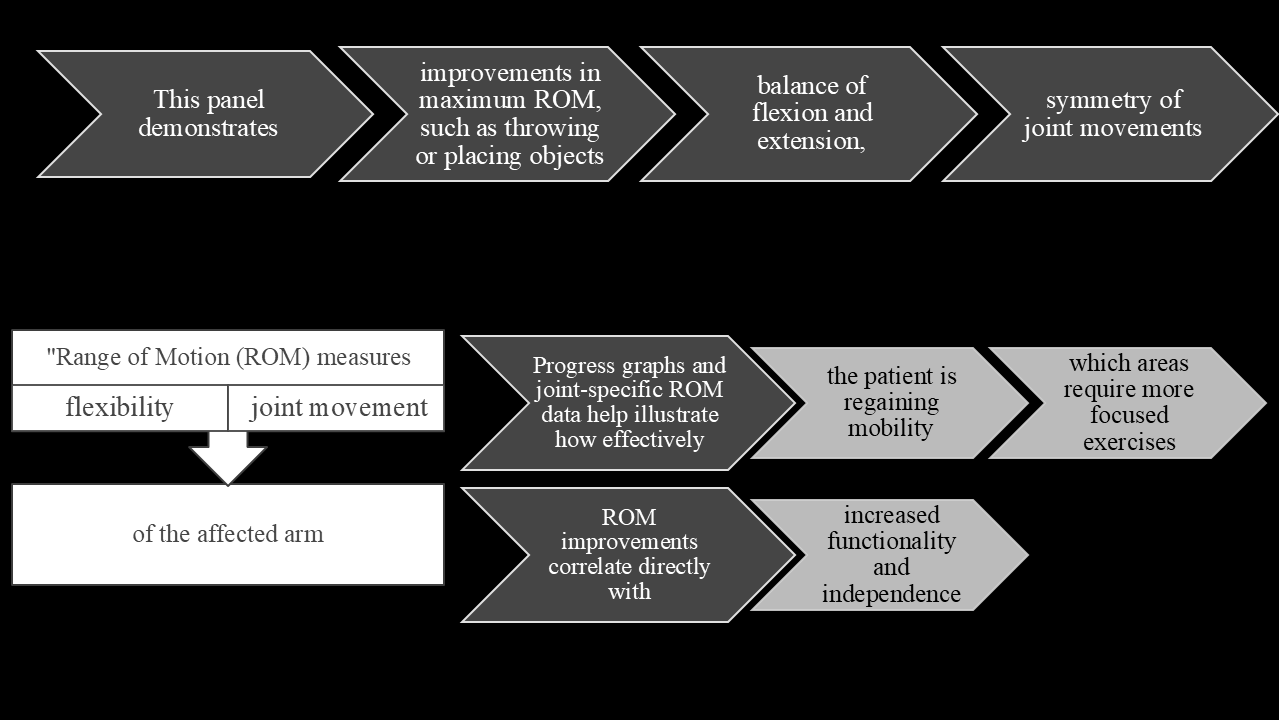XR Neurorehabilitation
Neurorehabiliation is physiotherapy in the context of cognitive impairment, where, um, physical remobilization is intrinsically linked to neurological repair.
Virtual, Augmented, and Mixed reality can enhance the experience of stroke patients because it can help reframe their difficult physiotherapy journeys as immersive, stimulating and entertaining experiences.
My innovation centers on creating gamified VR experiences designed to enhance stroke rehabilitation. These immersive experiences transform traditional physiotherapy exercises into playful, interactive activities.
VR Gameplay: The Giant Space Dinosaur Diet (Dinosaur Diet)
Feeding a giant dinosaur whilst floating serenely on an asteroid in outer space is just one example of a deeply personal and customisable experience that can be tailored to the needs of a patient.
This particular world I have built in Unity is based on a particular memory I have as a 6 year old of regularly visiting the Natural History museum to gawk at the dinosaurs. I was riveted by those fascinating, powerful lizards and here, in VR is my chance to interact with one.
By placing patients in playful, otherworldly settings, the rehab experience becomes uplifting, giving patients the opportunity to step outside of their current reality as a stroke patient and see themselves in empowering situations. This therapeutic illusion provides patients with a powerful psychological boost, fostering resilience and emotional uplift.
This approach leverages positive reappraisal and cognitive reframing to help patients reinterpret their rehabilitation journey, turning it into a hopeful and motivating experience.
Physiotherapist UI
*
Physiotherapist UI *
A 2024 systematic review and meta-analysis of VR for upper limb rehab in stroke patients found that VR “conferred benefits over conventional therapy for upper limb motor function, functional independence, Quality of life, Spasticity, and dexterity” and concluded that optimal paradigms likely integrate VR’s immersive capacity with conventional techniques (https://rdcu.be/dYeaM)
So how can virtual reality integration evolve “conventional techniques”?
Digital technology such as virtual reality devices adds significant power to the physiotherapist's toolkit by automating much of the numerical analysis traditionally required in rehabilitation. It provides detailed, real-time data on patient performance—such as movement accuracy, range of motion, and reaction time—allowing physiotherapists to save time and effort in collecting, recording and interpreting these metrics.
This enables physiotherapists to focus more creatively designing personalized treatments, solving complex patient challenges, and building deeper therapeutic relationships—ultimately enhancing both the quality and impact of rehabilitation.
Mock-Up Interface: Accuracy, Range of Motion, and Reactivity Panels
The following panels represent a prototype interface showcasing how metrics like accuracy, range of motion, and reactivity can be visualized within a VR-based physiotherapy app. This is an early conceptualization, aimed at illustrating the kind of data that could be tracked through virtual reality gameplay, serving as an example of how detailed metrics could be presented to both clinicians and patients.
These mock-up panels are not a polished or finalized product but are designed to facilitate dialogue with physiotherapists and other medical professionals. By creating these visual prototypes, my goal is to gather meaningful feedback from the very people who would be using this interface in a clinical setting. Their insights into what metrics are valuable, how they should be presented, and how data can be used to support patient recovery are crucial for refining and evolving the interface.
This approach is in line with a user-centered product design philosophy: using a visual and interactive prototype to bridge the gap between concept and practical application. It allows for rapid iteration, ensuring that the final product genuinely serves the needs of its users. While this mock-up may lack precision in areas like axis labeling or interactivity, it serves as a critical stage in collaboration, exploration, and refinement.
Accuracy
Measuring Throw Accuracy for Upper Extremity Rehab
Range of Motion
Tracking Range of Motion Improvements
Reactivity
Monitoring Reactivity Metrics
My Journey from VR Artist to VR Neurorehab developer.
In January 2024, I ruptured my ACL and sustained a large tear in my meniscus. At the same time my beloved grandfather was suffering from a series of strokes until eventually passing away on the 22nd of February.
As a virtual reality artist and dancer, my 3D art-making my virtual reality art software became a place where I could psychologically escape the limitations of my compromised mobility. Despite being unable to dance and walk properly, my limited movements became acts of empowered creativity where fire and lightning would shoot out of my hands in rainbow colors. This helped me stay positive, retain a sense of agency, and maintain my identity as an artist.
Simultaneously, I was empathetically and intuitively connected with my grandfather, feeling his horror at losing his physical abilities to perform ADLs. Instead of enthusiastically engaging with rehab and nutrition protocols, he was overcome with emotional exhaustion, demoralisation, helplessness and avoidance.
In March I started working for a German medtech company on virtual reality flying neurorehab experiences.
Since June I have been creating my own VR apps to use my experience of VR enhanced recovery to positively impact the psychological journey of patients like my grandfather.







